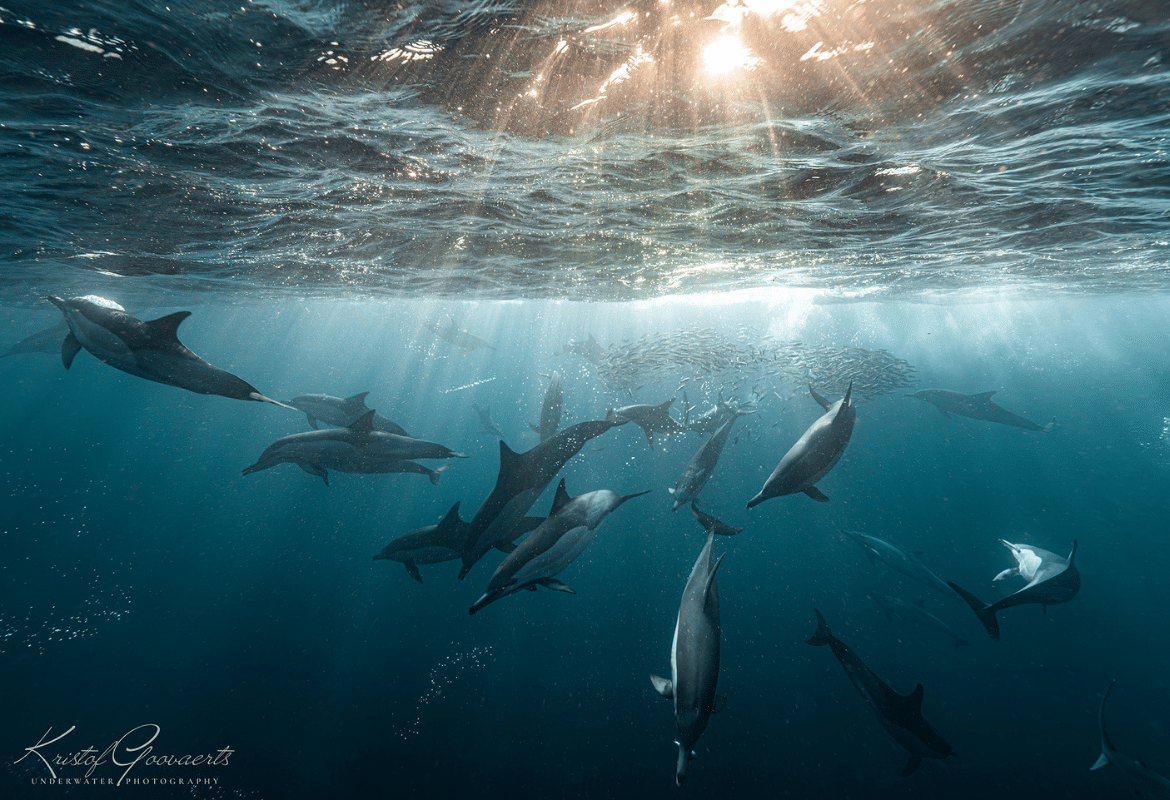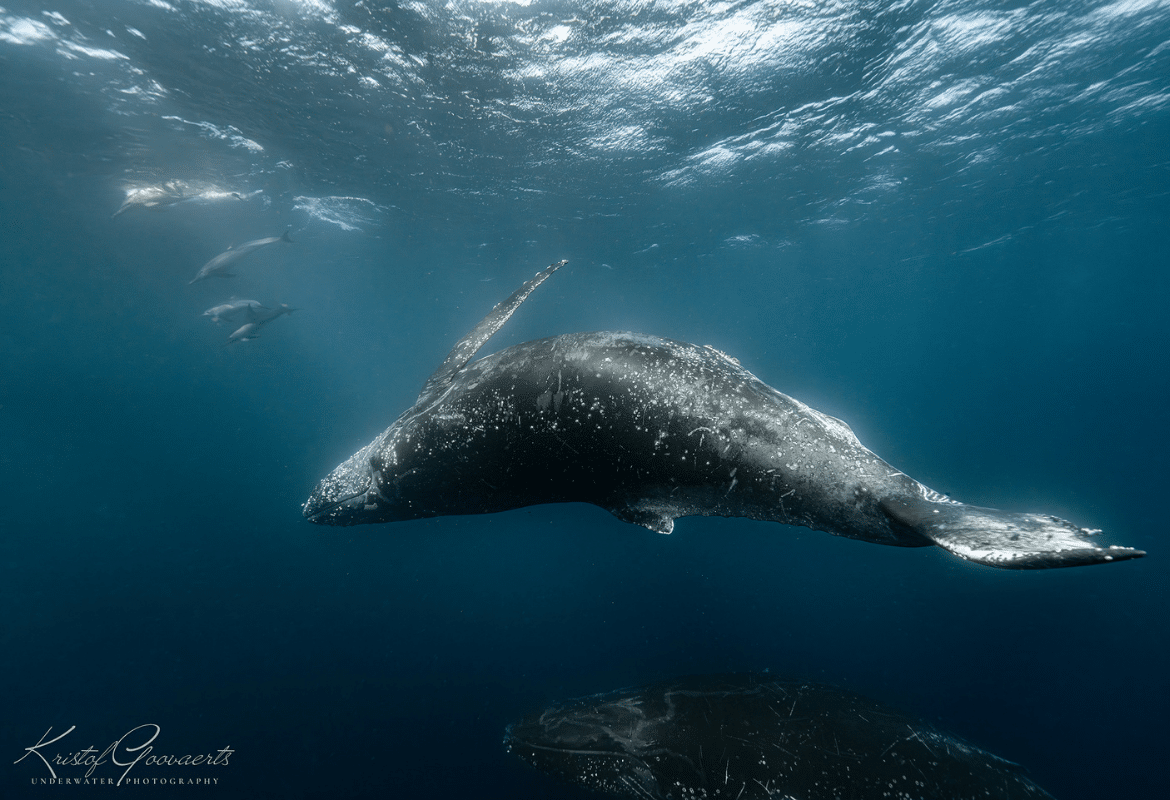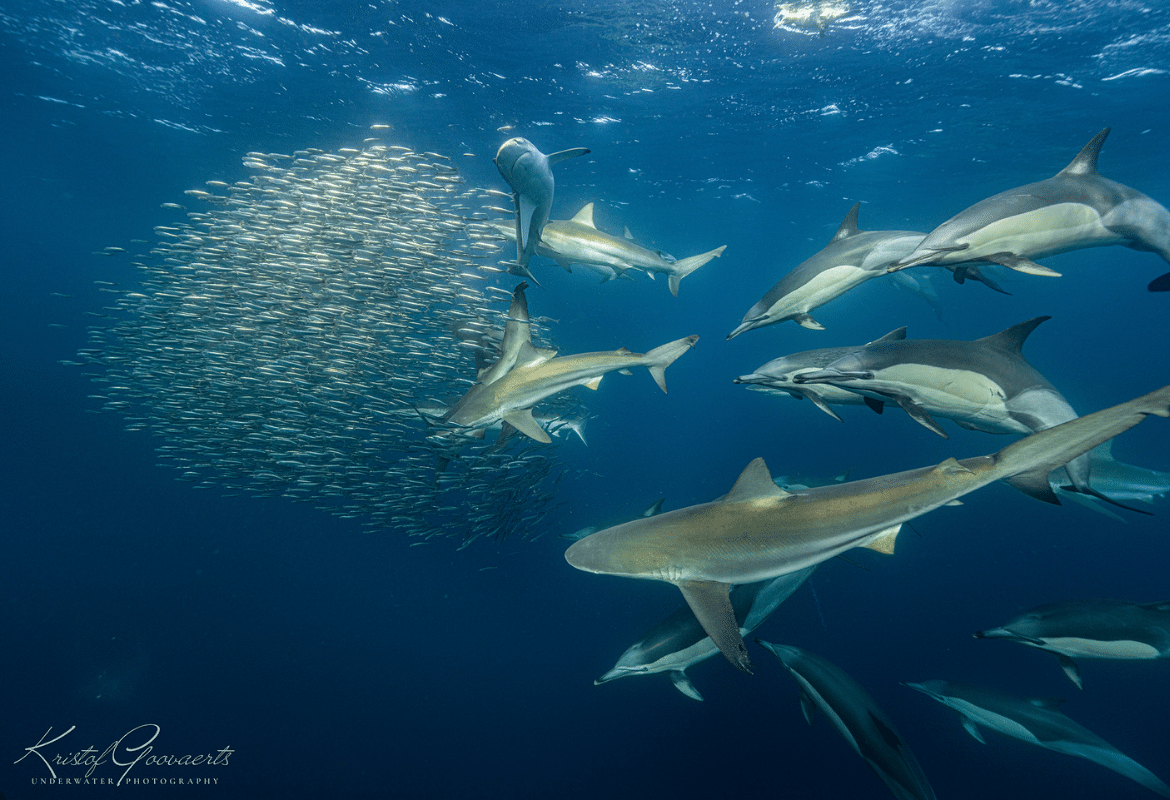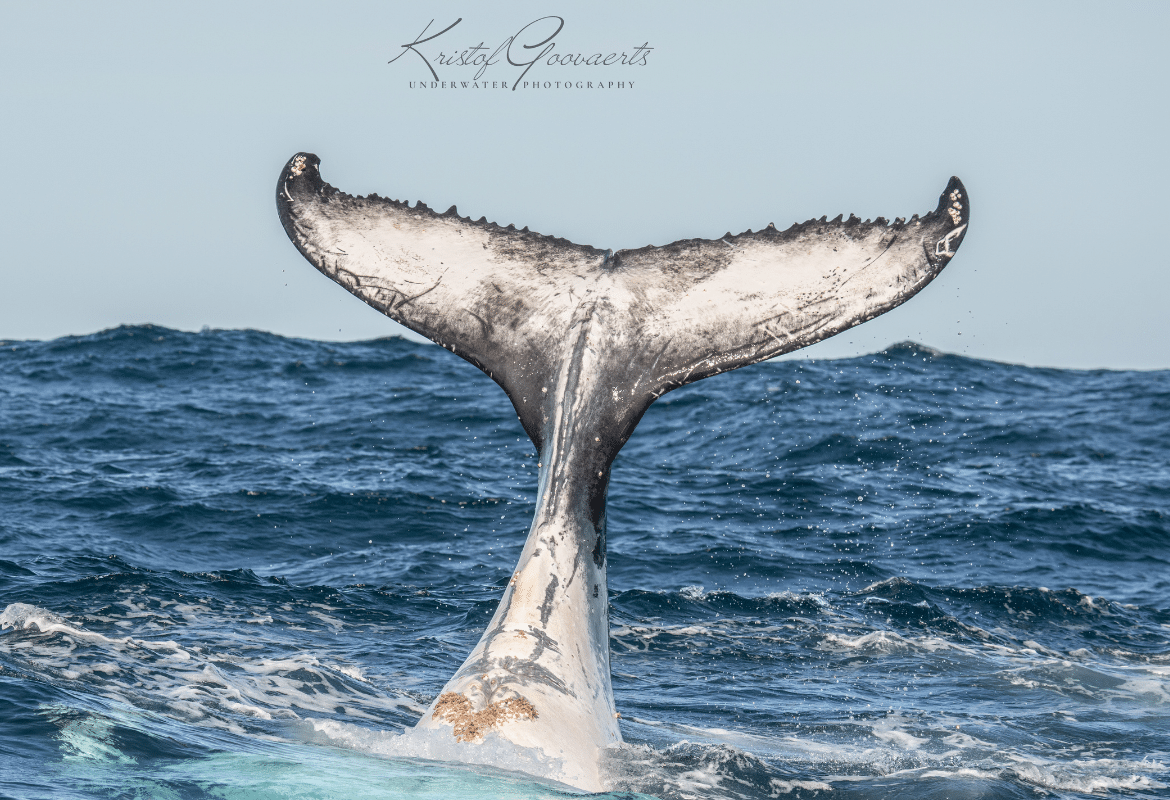Everything you want to know about the Sardine Run
The Sardine Run is one of the most spectacular natural phenomena in the world. Not only does it attract divers from all over the world to the east coast of South Africa, but the phenomenon is also a unique experience for adventurers seeking the magic of the ocean. While South Africa is known for its impressive fish migrations, Mexico also offers an amazing diving experience, especially when you talk about the emergence of giant schools of fish and the underwater diversity. In this blog, we take you to both the impressive waters of South Africa for the famous Sardine Run, and the hidden dive sites of Mexico, where the ocean also shows its impressive side.
Table of contents
What is the sardine run?
Every year, millions of sardines migrate through the ocean in huge schools. This is one of the largest fish migrations on Earth. During this journey, they are hunted by predators from all directions. For divers, it is a unique opportunity to end up in the middle of a living nature documentary.
Sardines are small, silvery fish that swim in large groups. During their migration, they form baitballs: compact spheres that move at lightning speed. These baitballs serve as protection, but actually attract predators. From above and below.
What is a baitball and why is it so spectacular?
During the Sardine Run, sardines form a unique defensive formation: the baitball. This is a compact, spinning ball of thousands to millions of fish that stick close together to confuse predators. The individual sardine is vulnerable, but together they can try to escape attackers. The idea is simple: the more movement and reflection, the harder it becomes to pick one off.
Yet predators are trained to do just this. Dolphins work together to trap a baitball. They swim in circles around the school, driving the fish to the surface. Seabirds take advantage of this moment and plunge into the water from a great height at lightning speed. Sharks come from below and slice through the baitball in search of easy prey.
A baitball is constantly in motion. The silver shimmer of thousands of fish, the hiss of hunting predators and the bubbling water make it one of the most impressive underwater natural phenomena. For divers, it feels like being at the center of a living storm. Everything is moving, everything is hunting, and everything is just a few feet away from you.
What animals prey on the sardines?
The Sardine Run attracts an impressive collection of hunters. Anything that swims, flies or dives will descend on this silver storm in the sea.
- Dolphins work together in groups to divide and trap schools of sardines. They use bubble curtains and sharp twists to herd the fish together.
- Sharks emerge from the depths and attack with speed and precision. Species such as bronze whalers and blacktip sharks dominate the scene.
- Seabirds such as gannets plunge into the water from great heights and strike at lightning speed.
- Whales and orcas also occasionally appear. They can suck in hundreds of sardines at once with just 1 bite.
Sardine Runs in South Africa
The Sardine Run is undoubtedly one of the most impressive natural phenomena in the world. Every year, between June and early July, millions of sardines migrate along the east coast of South Africa. This massive fish migration not only attracts other marine animals, but also offers divers the chance to witness a breathtaking spectacle of nature up close. The Sardine Run takes place primarily along the Wild Coast, but there are also specific locations known as the best bases for this adventure.
Port St. Johns: the heart of the Sardine Run
One of the most famous places to experience the Sardine Run is Port St. Johns, located in the Eastern Cape province. Centrally located on the Wild Coast, this location offers perfect conditions for divers who want to experience the spectacle. The strong currents and unpredictable sea make it an adventurous destination, where you can immerse yourself in the full action of the migration.
In Port St. Johns, fast rubber boats depart each morning for the ocean. They look for signs of the action, such as diving seabirds or jumping dolphins, indicating where the sardines are. Once a baitball is found, it’s time for divers and snorkelers to jump into the water and get involved in this spectacle. It is an experience that is not only visually, but also sonically impressive: the sound of thousands of fish trying to escape in panic, while sharks and dolphins make their way through the shoal, is an experience you won’t soon forget.
Coffee Bay: breathtaking nature and dive sites
Another popular location to experience the Sardine Run is Coffee Bay, also located on the Wild Coast in the Eastern Cape province. Known for its scenic beauty, Coffee Bay is also an ideal base for the Sardine Run. Not only are the waters here rich in fish, but the rugged coastline makes the experience even more impressive.
In Coffee Bay, sardines often pass by in huge schools, providing an unforgettable experience for divers. Because of its location in a remote area, access to the waters here is often quieter than in more touristy areas, giving you an intimate and undisturbed diving experience. Here you can enjoy not only the spectacle of sardines, but also the presence of sharks, dolphins and seabirds, all feasting on the migrating sardines.
Mazeppa Bay: hidden gem of the Wild Coast
Mazeppa Bay is another lesser-known destination on the Wild Coast where you can experience the Sardine Run phenomenon. Still relatively untouched by mass tourism, this village offers a more remote experience for divers looking for adventure and a pure natural phenomenon. Mazeppa Bay offers excellent dive sites where there is a good chance that you can witness the action of the sardine migration up close.
The wild seas and unpredictable currents make Mazeppa Bay a challenging but exciting destination for experienced divers. It is a place where you can experience wild nature in its purest form, surrounded by dolphins swimming with the sardines and sharks shooting quickly through the shoals.
The experience: what to expect
Conditions during the Sardine Run can be adventurous and quite rugged. The sea can be wild and unpredictable, and underwater visibility often ranges from moderate to good. Divers should be prepared for strong currents, colder water and sometimes limited visibility. But the rewards are great! Once you are in the water, you are surrounded by an explosion of speed, sound and movement.
You will be surrounded by dolphins communicating with each other, sharks flashing through the schools at breakneck speed, and all around you sardines moving in a chaotic but beautiful pattern. It’s a breathtaking experience you won’t soon forget. The intensity of nature is unparalleled, and the adrenaline of the moment makes it one of the most exhilarating diving experiences in the world.
Sardine Run – Dive into the chaos of South Africa!
The Sardine Run is a unique spectacle, where you are surrounded by millions of sardines off the coast of Port...
Sardine Runs in Mexico
Along Mexico’s west coast, near the Baja California peninsula, a sardine run also takes place from November to January. In the waters around La Paz, sardines migrate along the coast, closely followed by hunters such as sea lions and schools of hunting jackfish.
Conditions here are very different from the famous sardine run in South Africa. The water is often warm, calm and crystal clear. Visibility is excellent and the sunlight makes for spectacular underwater images. Instead of massive, explosive baitballs, you more often see smaller, concentrated hunting moments here. The atmosphere is calmer, but visually at least as impressive.
This sardine run is ideally suited for underwater photographers, nature lovers and divers seeking a less rugged but aesthetically impressive experience. Moreover, it is easy to combine with other dives in the region, such as with whale sharks or mobula rays.
Sardine Run in Magdalena Bay
Magdalena Bay is known as the place in Mexico to experience the sardine run up close. From a small fishing village, you set out by boat into the ocean in search of baitballs. The water is warm, visibility is often exceptionally good and the action takes place just below the surface.
During this sardine run, you snorkel instead of dive. The baitballs move quickly, and snorkeling makes it easier to get in and out of the water as soon as there is action. Large marlins are the main hunters here, but playful sea lions also hunt fanatically among the sardines.
The experience: what to expect
The day begins early. You set sail in a fast boat and, together with the guides, search for signs of hunting: jumping birds, chasing dolphins or disturbance on the surface of the water. Once a baitball is found, you jump into the water with mask and snorkel to witness everything up close.
The action is intense and fast-paced. You see sardines moving in panic while predators strike with lightning speed. It is a visual spectacle in calm waters, with perfect lighting conditions for photography or simply an unforgettable nature experience.
What is the difference between the sardine run in South Africa and Mexico?
Both venues offer a unique experience, but differ greatly in atmosphere and intensity. Here is a handy overview of both venues.
| South Africa | Mexico (La Paz) | |
|---|---|---|
| Best travel time | June to early July | September through December |
| Water conditions | Cool and often rough | Warm and calm |
| Visibility under water | 5 to 15 meters | 20 to 30 meters |
| Expected Animals | Sharks, dolphins, seabirds | Sea lions, marlins, pelagic species |
| For whom suitable | Experienced and adventurous divers | Also for snorkelers |
The Sardine Run is one of the most spectacular natural phenomena in the world. Whether you choose rugged South Africa or the clear waters of Mexico, you will witness pure, wild nature in action. For divers and nature lovers, this is an experience you won’t soon forget.
Want to know more about traveling to South Africa or La Paz to see for yourself? Feel free to contact us. You can also request a no-obligation travel proposal so we can put the trip together completely for you.






